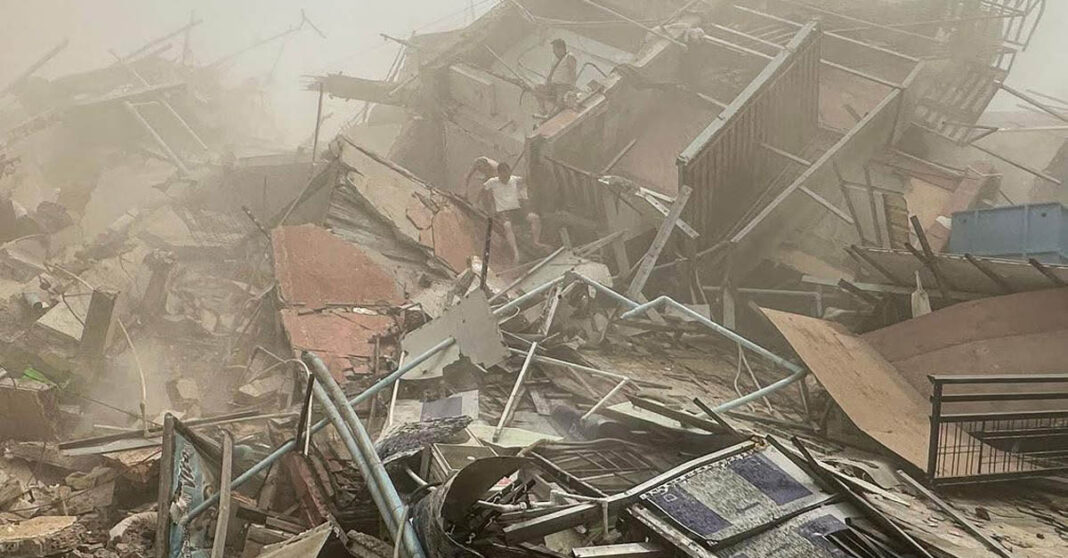Myanmar’s military government has carried out airstrikes on villages despite a deadly earthquake that has claimed the lives of approximately 1,700 people. The ongoing strikes have sparked widespread concerns, with both domestic and international critics voicing their outrage on social media platforms like X and Facebook.
The most vocal critics came from the Karen National Union (KNU), one of the country’s oldest ethnic armies. The group condemned the Myanmar military government on 30 March for targeting civilian areas at a time when the population is already struggling with the disaster’s aftermath.
 “Under ordinary circumstances, the military institution would be expected to lead in response to the national crisis,” KNU stated in its official notice released on 30 March.
“Under ordinary circumstances, the military institution would be expected to lead in response to the national crisis,” KNU stated in its official notice released on 30 March.
“However, due to the current control of the SAC [State Administration Council], the military has instead been focused on exploiting the country’s resources and privileges and deploying its forces to attack its people.”
Reports indicate that the junta carried out an airstrike in Pakokku Township, Magway Region, killing two women and injuring seven others.
The military government has already lost ground to rebel forces, and even before the earthquake, nearly 20 million of Myanmar’s 54 million people were in need of food and shelter, according to the United Nations.
On 29 March, Myanmar’s Prime Minister and military leader, Senior General Min Aung Hlaing, visited earthquake-affected areas in Mandalay to assess the damage and losses caused by the disaster. Accompanied by his team, he first conducted an aerial inspection of the impacted regions.
Later, he met with Mandalay Region’s Chief Minister U Myo Aung, the Commander of the Central Military Command, and other officials at the Central Military Command, where they provided an update on the extent of the destruction.
During the meeting, Min Aung Hlaing stressed the importance of swift action in search and rescue operations and other necessary measures. He also assured that inspections of the damage in the region would continue.
Myanmar’s military first took control of the government on 1 February, 2021, just before the newly elected parliament was set to convene.
The military cited concerns over election irregularities following the National League for Democracy’s victory in the November 2020 elections. Key leaders, including Aung San Suu Kyi and President Win Myint, were detained, and a state of emergency was declared with plans for new elections.
What’s the Damage So Far
The 7.7-magnitude earthquake, which struck on 29 March, caused widespread destruction. The first tremor, occurring at approximately 12:50 local time, was followed by a second one 12 minutes later, measuring 6.4 in magnitude.
A 5.1-magnitude aftershock was recorded on 30 March, northwest of Mandalay. Tremors were felt beyond Myanmar, affecting parts of Thailand, Laos, and China. The US Geological Survey (USGS) has warned that Myanmar’s death toll could exceed 10,000, with economic losses potentially surpassing the country’s annual output.
In Thailand, the earthquake has claimed at least 18 lives, including 11 people trapped in a collapsed high-rise building in Bangkok. Seventy-eight others remain missing.
International Support
Amid the crisis, Singapore has pledged support for Myanmar and Thailand.
Singaporean Foreign Minister Vivian Balakrishnan attended a virtual Special Emergency Meeting of ASEAN Foreign Ministers on 30 March, convened by ASEAN Chair Malaysia.
He conveyed Singapore’s condolences for the lives lost and the widespread destruction, emphasizing the country’s solidarity with ASEAN during this difficult period. Balakrishnan backed ASEAN’s proposal to expand assistance through the ASEAN Coordinating Centre for Humanitarian Assistance on Disaster Management .
Singapore has deployed an 80-member Operation Lionheart contingent to aid in Myanmar’s disaster response and sent three Singapore Civil Defence Force officers as part of the ASEAN Emergency Response and Assessment Team under the humanitarian assistance on disaster management center. Additionally, Singapore has contributed USD 150,000 to support the Singapore Red Cross’ fundraising efforts.
Balakrishnan also called for an immediate ceasefire in Myanmar to facilitate humanitarian assistance, national reconciliation, and post-disaster reconstruction.
Meanwhile, Lao Prime Minister Sonexay Siphandone sent a telegram of condolences to Myanmar’s military chief, expressing deep sympathy for the loss of life and destruction caused by the earthquake.
Sonexay assured Myanmar of Laos’ solidarity and confidence in its recovery efforts, stating that he believed the government would help the people overcome the challenges and restore the affected areas to normalcy as soon as possible.



